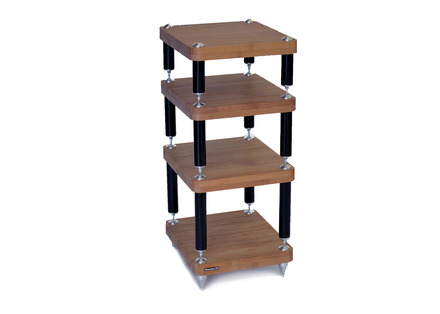If you think improving your network as I’ve suggested makes your system hyper-detailed and analytical, think again. In fact, the usual hi-fi terms don’t fit at all well with the type of gains you’ll hear.
What does happen....
the system becomes more emotional in that the music generates a stronger emotional response...you’ll find yourself becoming tearful at the sheer beauty or bouncing out of your chair at the rhythmic intensity. You’ll find your whole body getting involved...playing air guitar or drums, conducting the orchestra...... limbs moving in time to the music, unable to resist.
The system, reveals previously hidden meaning and inflections in the way notes are shaped and played, more clearly communicating the sheer brilliance of artists like Heifetz, Menuhin, Petrucciani, Burrell.
There’s more saturation of textures and colours, more clearly defined note shape, from the initial, highly localised percussive pluck, hammer strike, rosinous bow on string to the blooming of the note in its acoustic space, followed by the gradual decay and dying away of the note into infinite space and inky black silence.....the dynamic structure of the music that makes it sound genuine, alive, real.
There’s more information about the persons making the music, so it sounds more human and lifelike. There’s a greater feeling of notes being produced by 3 dimensional horns, resonating guitar or violin bodies. There’s a greater organic naturalness along with huge complexity as notes and their harmonics combine and resonate to create timbral identity.
Venue space and ambience have a cohesiveness, a presence and texture
The interplay of rhythms between musicians takes on a greater significance and produces tremendous rhythmic drive and propulsion that is hugely engaging.
The music grabs your attention, obliterating wandering and random thoughts as it draws you into its rhythmical web and tonal beauty.
You’ll start to appreciate more the subtlety of phrasing and timing, the artists‘ ‘feel‘ for their music. You’ll naturally listen with your eyes closed as the contradiction between the space you hear and the room you see is simply too great.
If these aren’t the kind of sound quality improvements you’re looking for, then certainly don’t bother. For me, its what I’ve been striving for for over 40 years of being involved with the hobby of music reproduction. Listening sessions that leave me feeling refreshed, invigorated, wonderous and frankly utterly amazed that those 16 bit 44.1 KHz recordings contain so much information that has remained more or less hidden or perhaps I should say ‘buried’ these past 40-50 years.
What does happen....
the system becomes more emotional in that the music generates a stronger emotional response...you’ll find yourself becoming tearful at the sheer beauty or bouncing out of your chair at the rhythmic intensity. You’ll find your whole body getting involved...playing air guitar or drums, conducting the orchestra...... limbs moving in time to the music, unable to resist.
The system, reveals previously hidden meaning and inflections in the way notes are shaped and played, more clearly communicating the sheer brilliance of artists like Heifetz, Menuhin, Petrucciani, Burrell.
There’s more saturation of textures and colours, more clearly defined note shape, from the initial, highly localised percussive pluck, hammer strike, rosinous bow on string to the blooming of the note in its acoustic space, followed by the gradual decay and dying away of the note into infinite space and inky black silence.....the dynamic structure of the music that makes it sound genuine, alive, real.
There’s more information about the persons making the music, so it sounds more human and lifelike. There’s a greater feeling of notes being produced by 3 dimensional horns, resonating guitar or violin bodies. There’s a greater organic naturalness along with huge complexity as notes and their harmonics combine and resonate to create timbral identity.
Venue space and ambience have a cohesiveness, a presence and texture
The interplay of rhythms between musicians takes on a greater significance and produces tremendous rhythmic drive and propulsion that is hugely engaging.
The music grabs your attention, obliterating wandering and random thoughts as it draws you into its rhythmical web and tonal beauty.
You’ll start to appreciate more the subtlety of phrasing and timing, the artists‘ ‘feel‘ for their music. You’ll naturally listen with your eyes closed as the contradiction between the space you hear and the room you see is simply too great.
If these aren’t the kind of sound quality improvements you’re looking for, then certainly don’t bother. For me, its what I’ve been striving for for over 40 years of being involved with the hobby of music reproduction. Listening sessions that leave me feeling refreshed, invigorated, wonderous and frankly utterly amazed that those 16 bit 44.1 KHz recordings contain so much information that has remained more or less hidden or perhaps I should say ‘buried’ these past 40-50 years.
Last edited:



